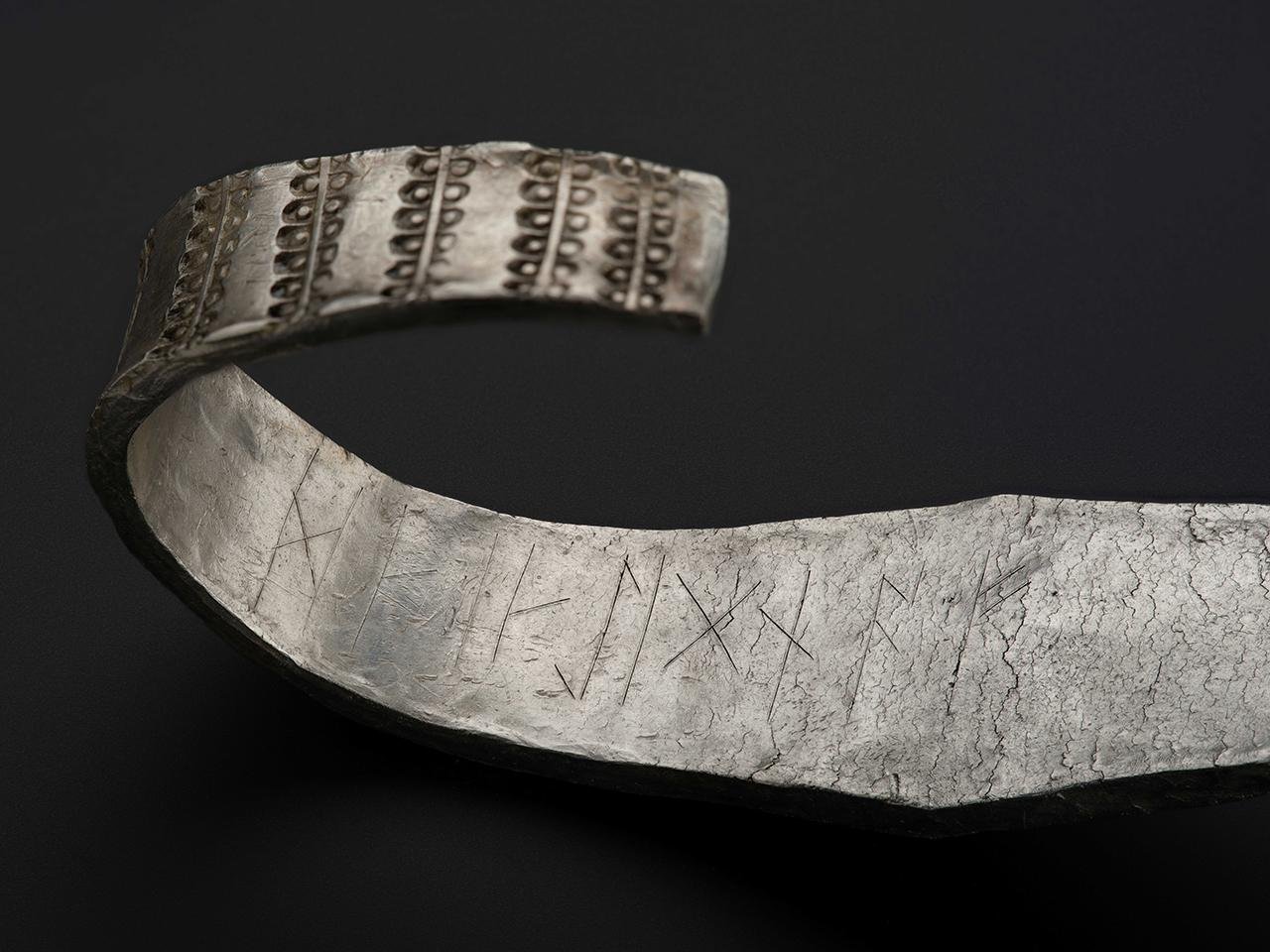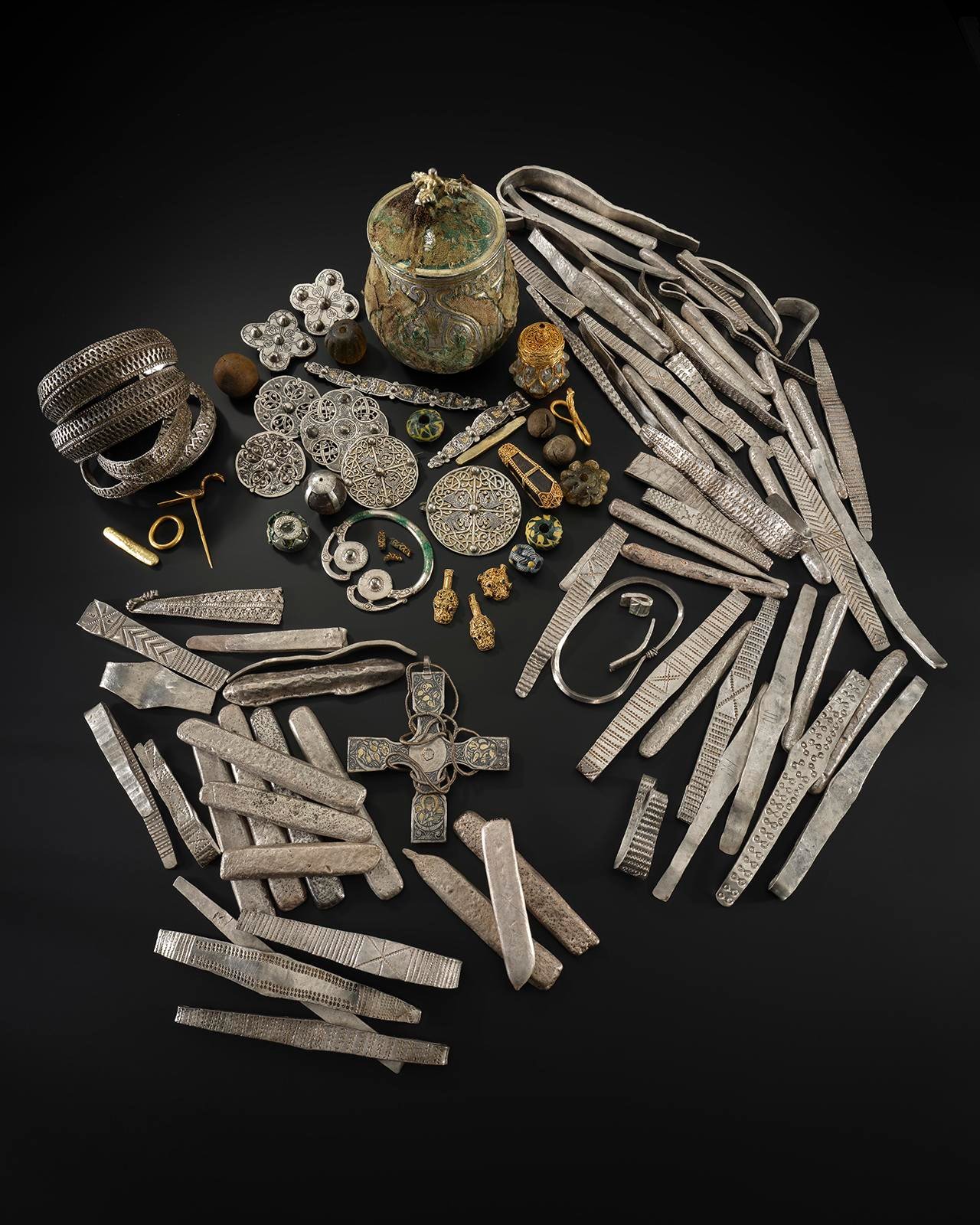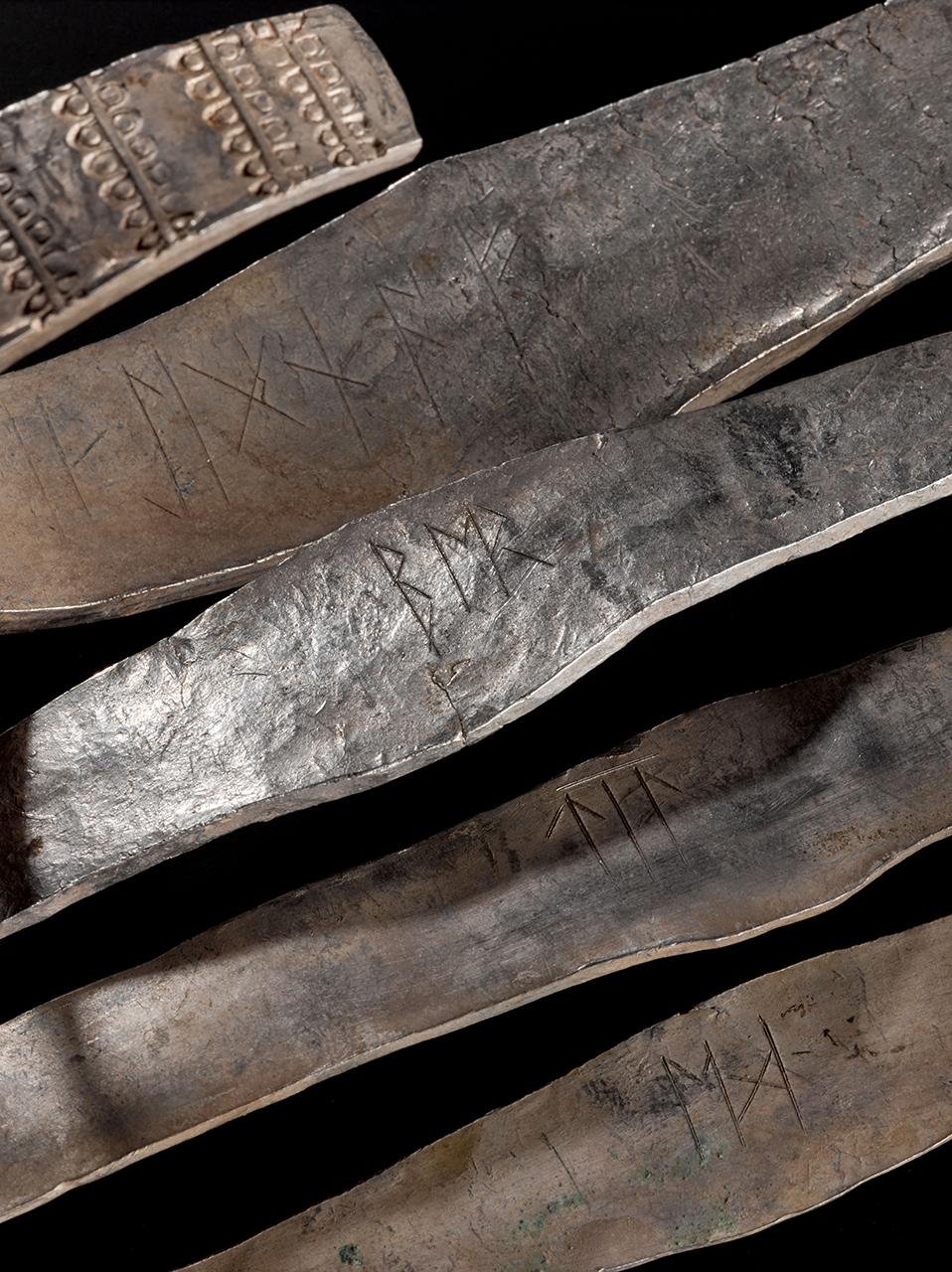A new interpretation of a runic inscription found on a silver arm ring from the well-known Viking-era Galloway Hoard has shed light on who owned it. Researchers at National Museums Scotland, working with specialists from the University of Wales, have translated the inscription to mean “this is the community’s wealth/property.” This suggests that the hoard was collectively owned rather than belonging to just a single individual.
 Galloway Hoard arm ring with runic inscription. Credit: National Museums Scotland
Galloway Hoard arm ring with runic inscription. Credit: National Museums Scotland
Metal detectorists found the Galloway Hoard in 2014 near Balmaghie in southwest Scotland. This Viking-age treasure ranks as one of the most important ever unearthed in Britain. The hoard contains over 11 pounds (5 kilograms) of silver and gold buried with care in four distinct parcels. It was buried around the year 900 and includes silver bullion, a rare Anglo-Saxon pectoral cross, gold pieces hidden within a wooden box, and a collection of relics, beads, pendants, brooches, and bracelets. Some objects in the hoard came from as far as Iran, with experts tracing a silver-gilt vessel to a mine in the Sasanian Empire.
Previously, scholars had struggled to interpret one of the four arm rings inscribed with runes. While three of them contained recognizable Old English name elements, the fourth remained a mystery due to an unusual spelling. The breakthrough came when researchers realized that the final rune, marked with dots on either side, represented the name of the F-rune, ‘feoh,’ meaning “wealth” or “property.” This led them to identify ‘ЇIGNA’ as a variation of the Old English word ‘higna,’ meaning “community.” The full phrase, despite minor spelling deviations, was interpreted as “This is the community’s wealth.”
Martin Goldberg, principal curator at National Museums Scotland, said: “The idea that the wealth represented by this hoard would be communally held is fascinating. It still leaves us with unanswered questions about the circumstances in which a community’s wealth would come to be buried, and also which particular community. Some material within the hoard, such as the pectoral cross and the rock crystal jar made for Bishop Hyguald, would support this being a religious community.”
 The Galloway Hoard. Credit: National Museums Scotland
The Galloway Hoard. Credit: National Museums Scotland
Leading runologist Dr. David Parsons from the University of Wales, who worked on the translation, acknowledged the complexities of the inscription: “This is a difficult and unusual inscription, and the proposed translation is challenging. There are a number of things that are technically ‘wrong’ when compared with what we know about ‘correct’ runic writing. However, if we consider regional and idiomatic variations in spoken and written English today, it becomes possible to accept this as a plausible reading. And in the context of what we can deduce about the Galloway Hoard, it becomes really quite compelling.”
The new findings are part of the three-year research initiative тιтled Unwrapping the Galloway Hoard, led by National Museums Scotland in partnership with the University of Glasgow and supported by the UKRI Arts and Humanities Research Council (AHRC).
 Runic inscriptions on the Galloway Hoard. Credit: National Museums Scotland
Runic inscriptions on the Galloway Hoard. Credit: National Museums Scotland
The arm ring and other items from the hoard will soon be on display as part of Treasures of the Viking Age: The Galloway Hoard, a new international touring exhibition. The exhibition will launch at the South Australian Museum in Adelaide on February 8, showcasing the extraordinary craftsmanship and the mystery surrounding the hoard’s burial. Through audiovisual presentations and 3D reconstructions, visitors will be able to explore the artifacts and the research behind them.
More information: National Museums Scotland





